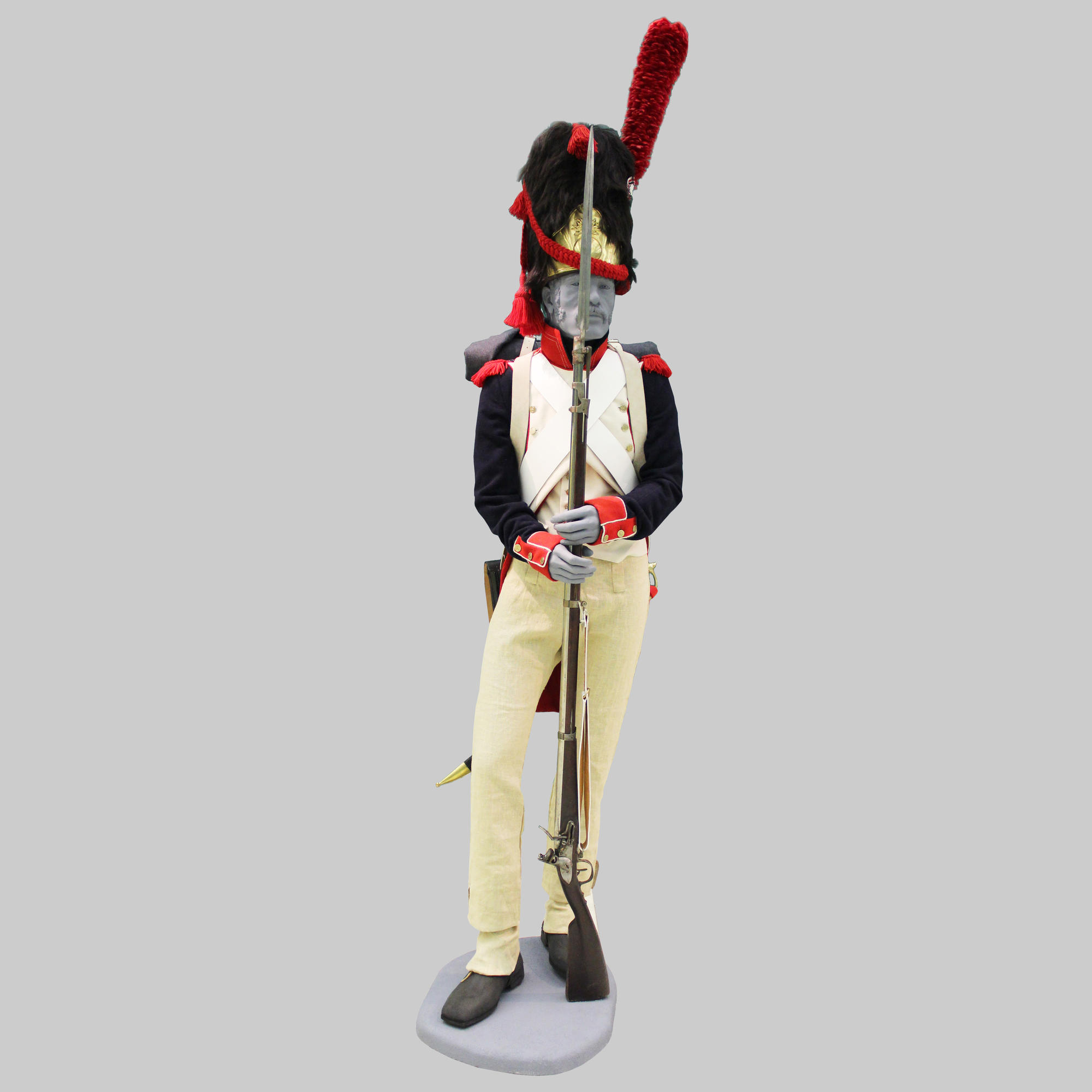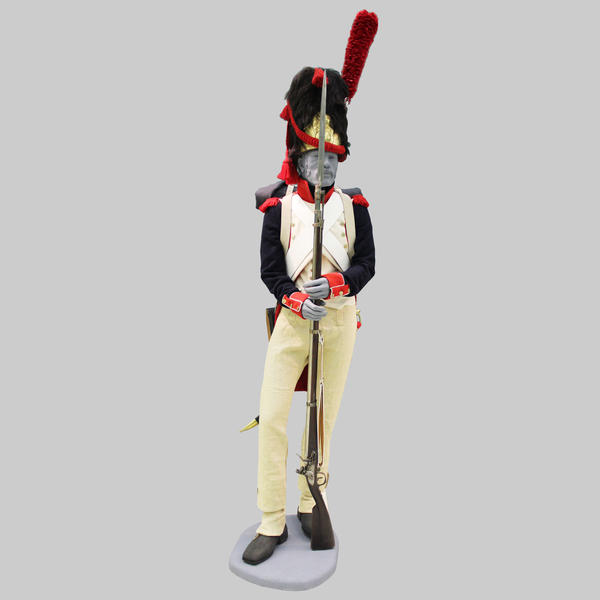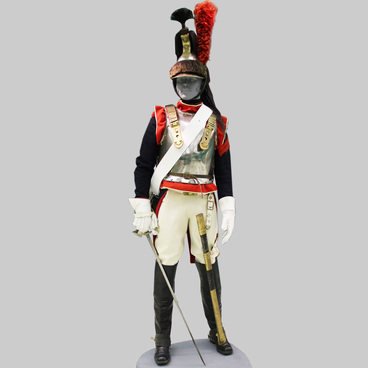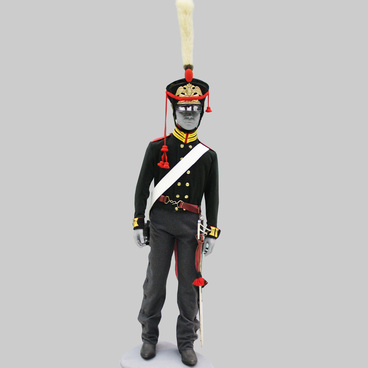According to the 1798 conscription law (Jourdan law), all male citizens of France, aged 20 to 25, were bound to military service. The legislated length of service was five years in peace time; in war time, it was considered to be for life. That was the case in 1805–1815, a period when the wars waged by Napoleon’s empire were actually uninterrupted. The length of service was the main grounds for an officer’s rank, since military schools only provided about 15 percent of all required officers.
All infantry in Napoleon’s Great Army (Grande Armée) consisted of line infantry and light infantry. By 1812, these two types of infantry did not have any appreciable differences in tactics left, so their uniform was their principal distinction.
In 1812, the name of a grenadier applied to the lower-ranking servicemen, such as privates and non-commissioned officers, of elite companies, battalions, and regiments. In every battalion of the French line infantry, the 1st Company was a grenadier company. Grenadier companies would normally march at the head of an infantry column and fought mostly in a line.
Napoleon’s line infantry wore dark blue coats, white waistcoats, and breeches with gaiters, protective covering for boots. Summer gaiters were white, winter gaiters black.
The traditional headdress for grenadier companies was a tall bearskin (or, less frequently, goatskin) cap. One distinctive feature of elite units in the French army was a plume, a cap decoration made of cock feathers.
Under regulations developed in accordance with Napoleon’s orders, bearskin caps were to be replaced with shakoes, but in 1812 these regulations were not yet complied with by a majority of the line regiments. A lot of grenadiers retained their traditional headgear and wore them in action.
This grenadier of the 46th line regiment is armed with an infantry Charleville musket, 1777 model, and an infantry sabre. Both the gun and the sabre were modifications of Year IX of the Republic. On the belt at the back, grenadiers carried a cartridge box of 36 rounds. Also behind the back was a rolled greatcoat with bound ends to be carried on the knapsack. In the Russian army, rolled greatcoats were worn on the shoulder.
Napoleon’s 46th line regiment record includes the battles of Smolensk, Valutina Gora, and Borodino in 1812. In the Borodino battle, the regiment was an active participant in the fighting for Semyonovskoye flèches, better known as Bagration’s flèches, a most important fortification of the Russian army.
All infantry in Napoleon’s Great Army (Grande Armée) consisted of line infantry and light infantry. By 1812, these two types of infantry did not have any appreciable differences in tactics left, so their uniform was their principal distinction.
In 1812, the name of a grenadier applied to the lower-ranking servicemen, such as privates and non-commissioned officers, of elite companies, battalions, and regiments. In every battalion of the French line infantry, the 1st Company was a grenadier company. Grenadier companies would normally march at the head of an infantry column and fought mostly in a line.
Napoleon’s line infantry wore dark blue coats, white waistcoats, and breeches with gaiters, protective covering for boots. Summer gaiters were white, winter gaiters black.
The traditional headdress for grenadier companies was a tall bearskin (or, less frequently, goatskin) cap. One distinctive feature of elite units in the French army was a plume, a cap decoration made of cock feathers.
Under regulations developed in accordance with Napoleon’s orders, bearskin caps were to be replaced with shakoes, but in 1812 these regulations were not yet complied with by a majority of the line regiments. A lot of grenadiers retained their traditional headgear and wore them in action.
This grenadier of the 46th line regiment is armed with an infantry Charleville musket, 1777 model, and an infantry sabre. Both the gun and the sabre were modifications of Year IX of the Republic. On the belt at the back, grenadiers carried a cartridge box of 36 rounds. Also behind the back was a rolled greatcoat with bound ends to be carried on the knapsack. In the Russian army, rolled greatcoats were worn on the shoulder.
Napoleon’s 46th line regiment record includes the battles of Smolensk, Valutina Gora, and Borodino in 1812. In the Borodino battle, the regiment was an active participant in the fighting for Semyonovskoye flèches, better known as Bagration’s flèches, a most important fortification of the Russian army.



